Our Library
Explore our publications, from research papers and series to educational materials, covering all aspects of conflict transformation and peace promotion.
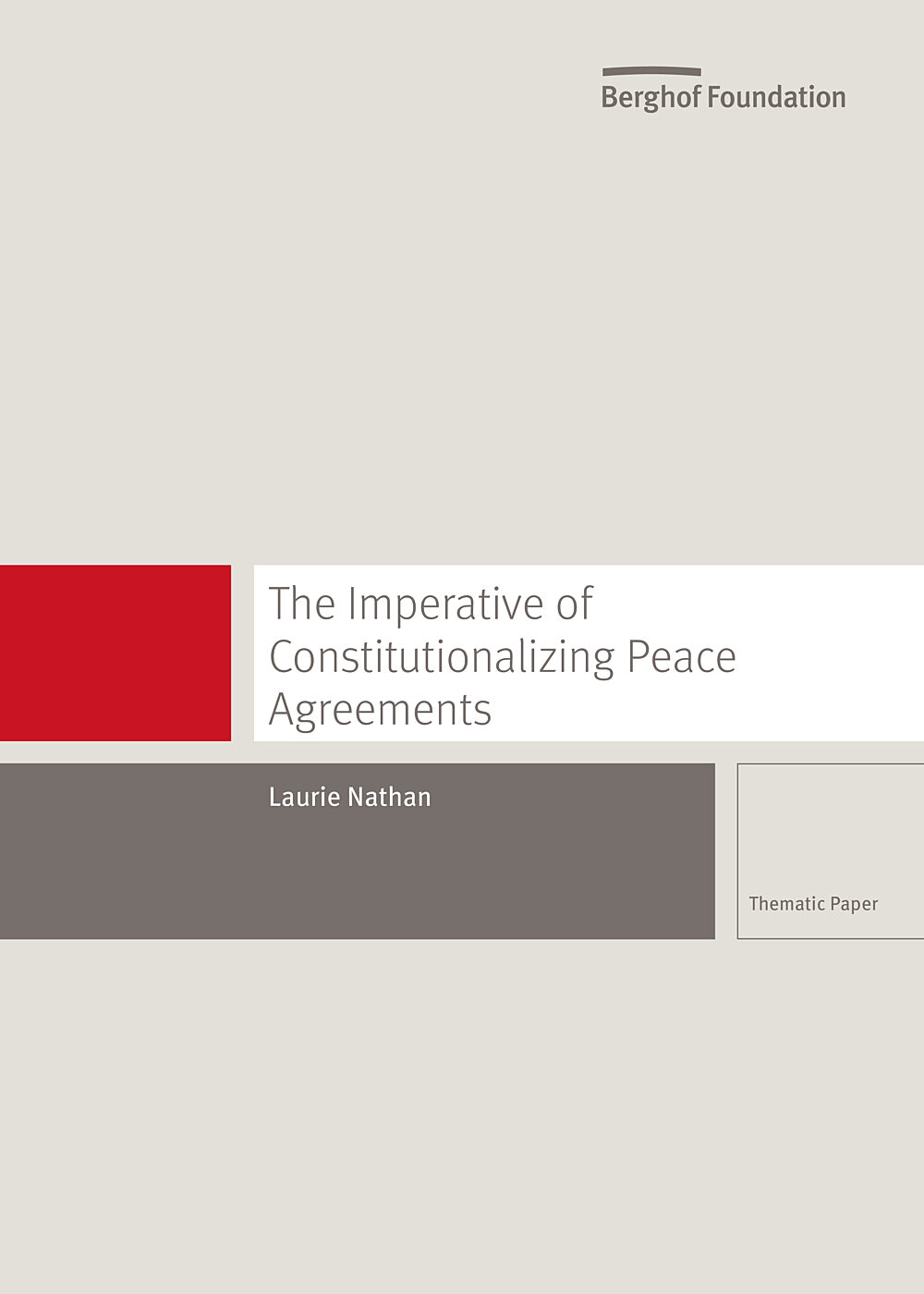
The Imperative of Constitutionalizing Peace Agreements
Nathan seeks to contribute to an understanding of the relationship between comprehensive peace agreements (CPAs) and post-conflict constitutions (PCCs). He defines a PCC as a new or revised constitution enacted as part of efforts to end a violent intra-state conflict and prevent its recurrence. This definition focuses on the purpose and not the timing of the constitutional reform. It encompasses constitutional reform that precedes, follows or takes the place of a CPA in an intended transition from intra-state conflict to sustainable peace. On this background, Nathan addresses three questions: How do conflict parties see the substantive and legal relationship between CPAs and PCCs when they are negotiating a settlement to end armed conflict? Why do the parties to a CPA frequently wish to constitutionalize their negotiated settlement in whole or in part? And what is the substantive and legal relationship between CPAs and PCCs after constitutional reform has taken place?
- Year2019
- Author(s)Laurie Nathan
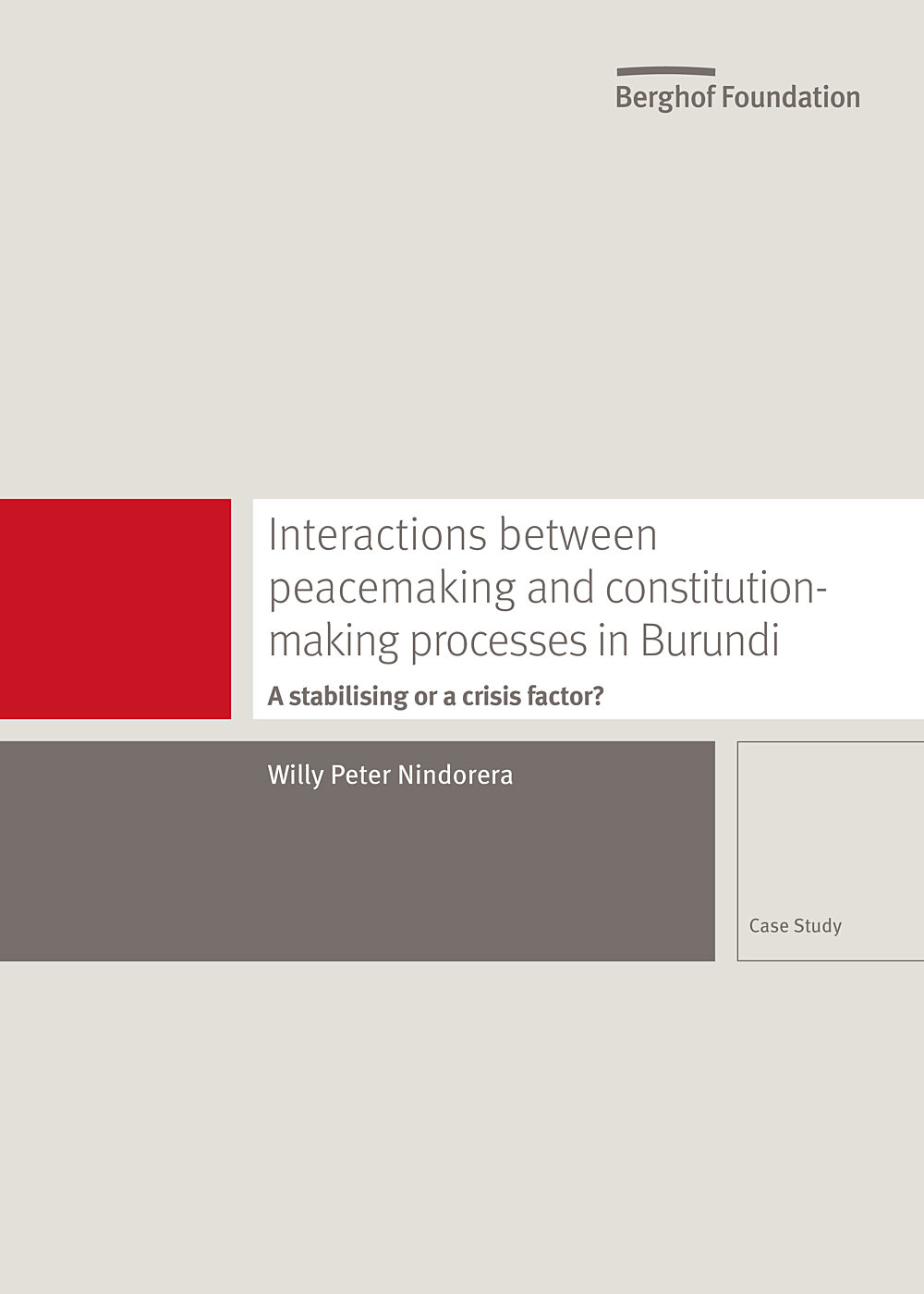
Interactions Between Peacemaking and Constitution-Making Processes in BurundiA Stabilising or a Crisis Factor?
Nindorera analyses the regional mediation process of the Arusha Accords in Burundi. The process, first chaired by president of Tanzania Nyerere and then by Nelson Mandela, lasted for over two years and led to very comprehensive and detailed peace agreements.
- Year2019
- Author(s)Willy Peter Nindorera

Les Interactions Entre le Processus de Paix et l'Elaboration Constitutionnelle au BurundiFacteur de Stabilité ou de Crise ?
Cette étude sur les interactions entre le processus de paix burundais et le(s) processus d’élaboration de(s) la constitution(s) qui a (ont) suivi s’inscrit dans le cadre d’un projet plus vaste portant sur diverses études de cas similaires où des conflits à dimension politicoidentitaire ont conduit à des négociations de paix menées sous médiation internationale, qui ont abouti par la suite à des processus de réforme et/ou de changement constitutionnel.
- Year2019
- Author(s)Willy Peter Nindorera
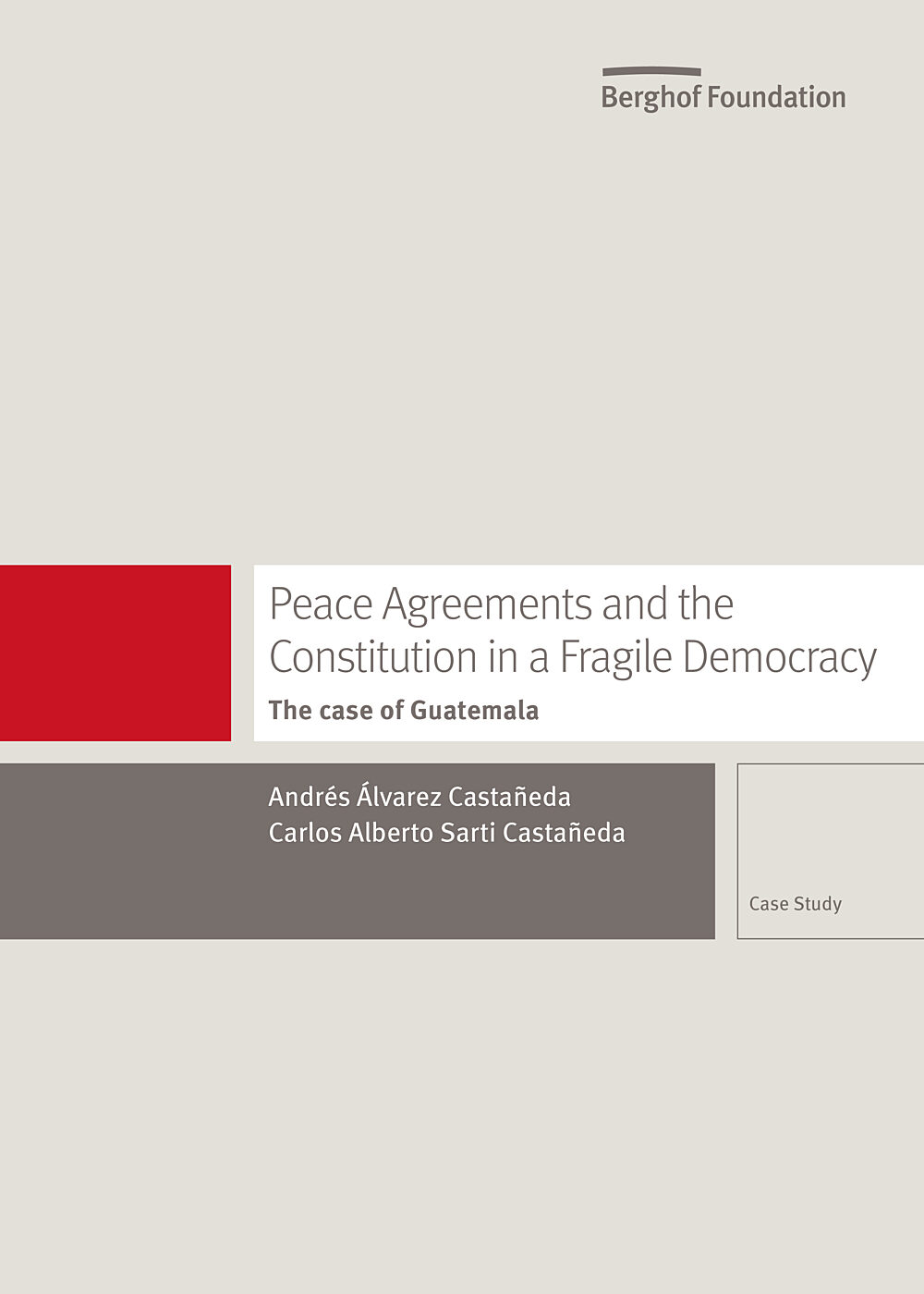
Peace Accords and the Constitution in a Fragile DemocracyThe case of Guatemala
Sarti and Álvarez jointly examine the Guatemalan Peace Accords of 1996, which put an end to the 36-year long civil war that was characterized by a high civilian death rate and widespread commitment of war crimes and crimes against humanity.
- Year2019
- Author(s)Andrés Álvarez Castañeda, Carlos Alberto Sarti Castañeda
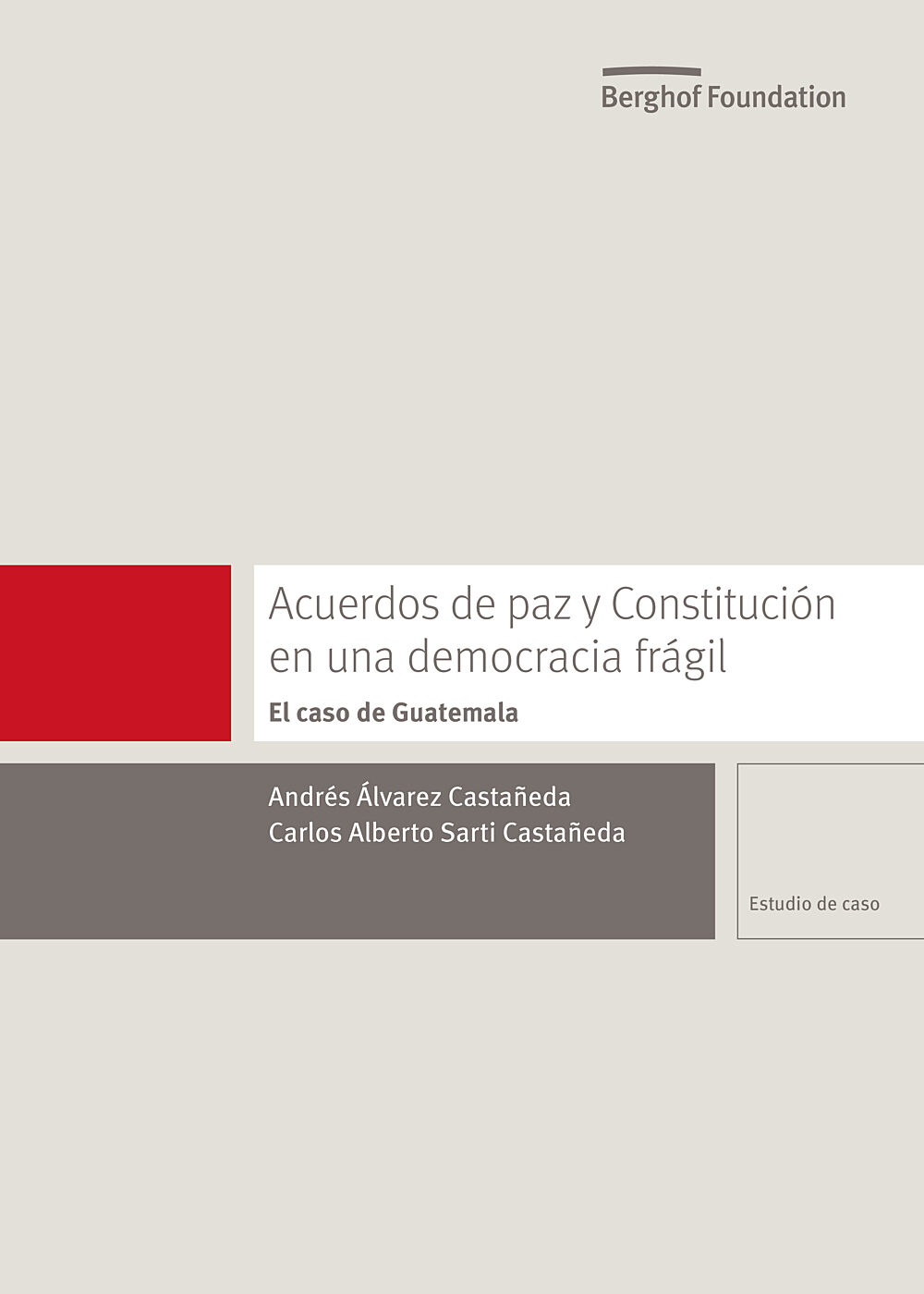
Acuerdos de Paz y Constitución en una Democracia FrágilEl Caso de Guatemala
Aunque instituciones y expertos/as han resaltado la importancia de analizar la influencia de la construcción de constituciones en los procesos de paz poco se ha publicado sobre este tema en Guatemala. El caso de Guatemala amerita un especial análisis, dado el tiempo que transcurrió entre el retorno a la democracia y elaboración de la Constitución vigente, y la negociación, firma e implementación de los procesos de paz: La Constitución actual entró en vigor en 1985 y el Acuerdo de Paz se firmó 11 años después, en diciembre de 1996.
- Year2019
- Author(s)Andrés Álvarez Castañeda, Carlos Alberto Sarti Castañeda
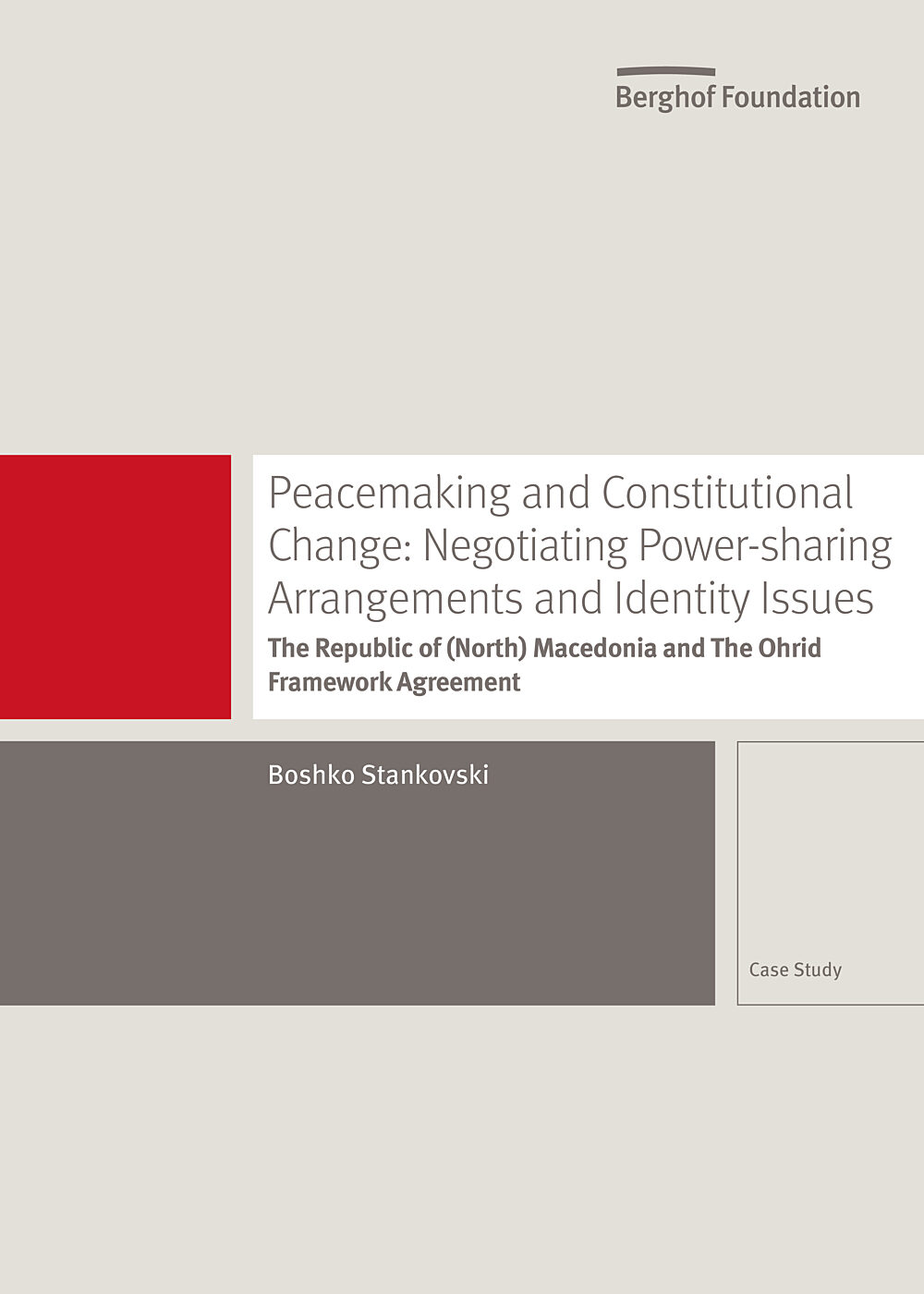
Peacemaking and Constitutional Change: Negotiating Power-sharing Arrangements and Identity IssuesThe Republic of (North) Macedonia and The Ohrid Framework Agreement
Stankovski looks at the case of the Republic of Macedonia and the Ohrid Framework Agreement (OFA) of 2001, which averted a full-blown civil war, the subsequent constitution making process, and the implementation of the constitution.
- Year2019
- Author(s)Boshko Stankovski
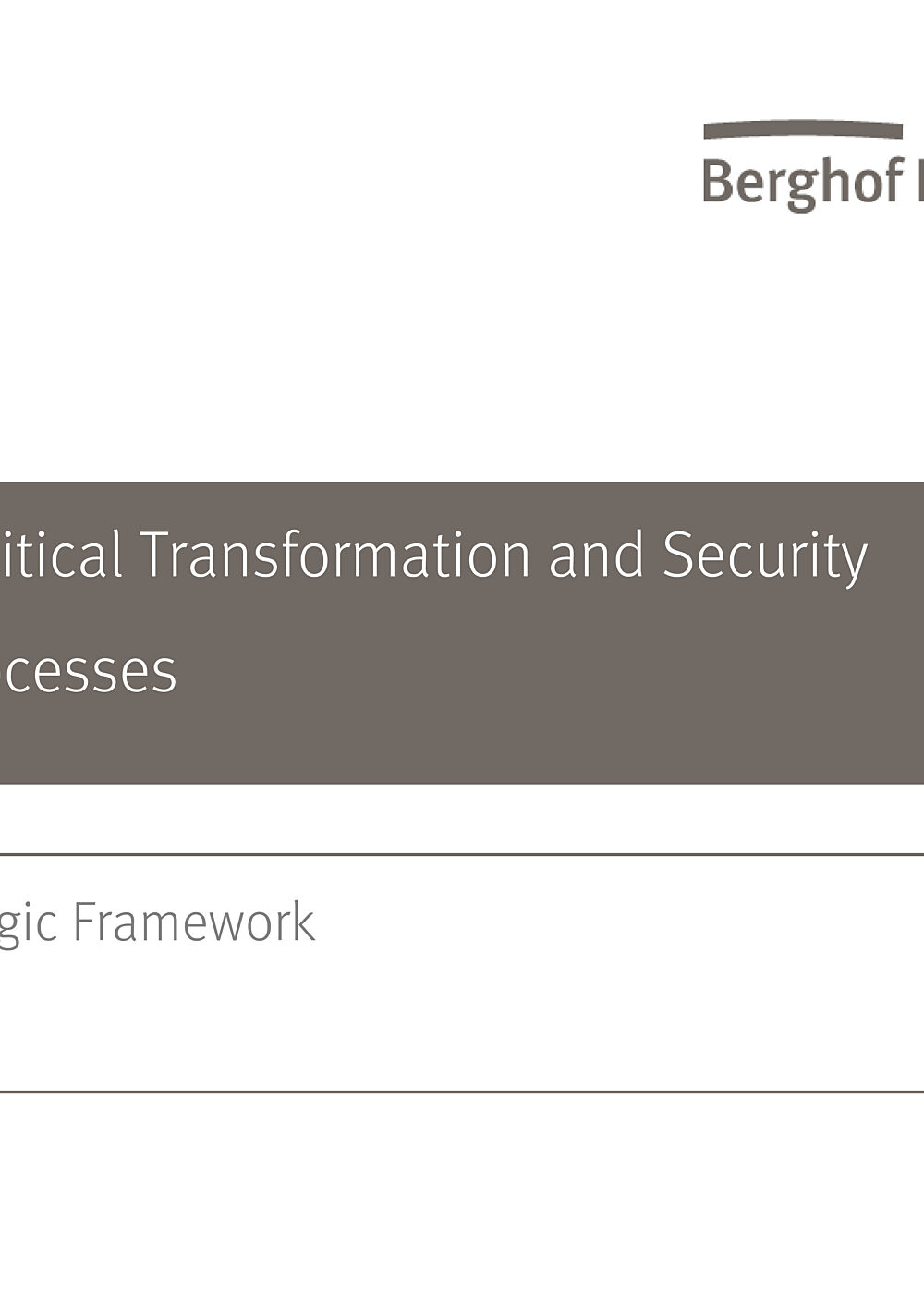
Managing Political Transformation and Security Transition ProcessesA Strategic Framework
This strategic framework was developed based on the 10th Annual Meeting on Negotiations entitled ‘Security Transition and Political Transformation’ held in San Sebastian, Spain, in October 2018. It provides an overview of the most frequent challenges resistance and liberation movements (RLMs) face with regard to transition processes and ways to address such challenges. While in no way exhaustive, we hope that our readers find this overview useful both for reflection and for enhancing their own negotiation strategies.
- Year2019
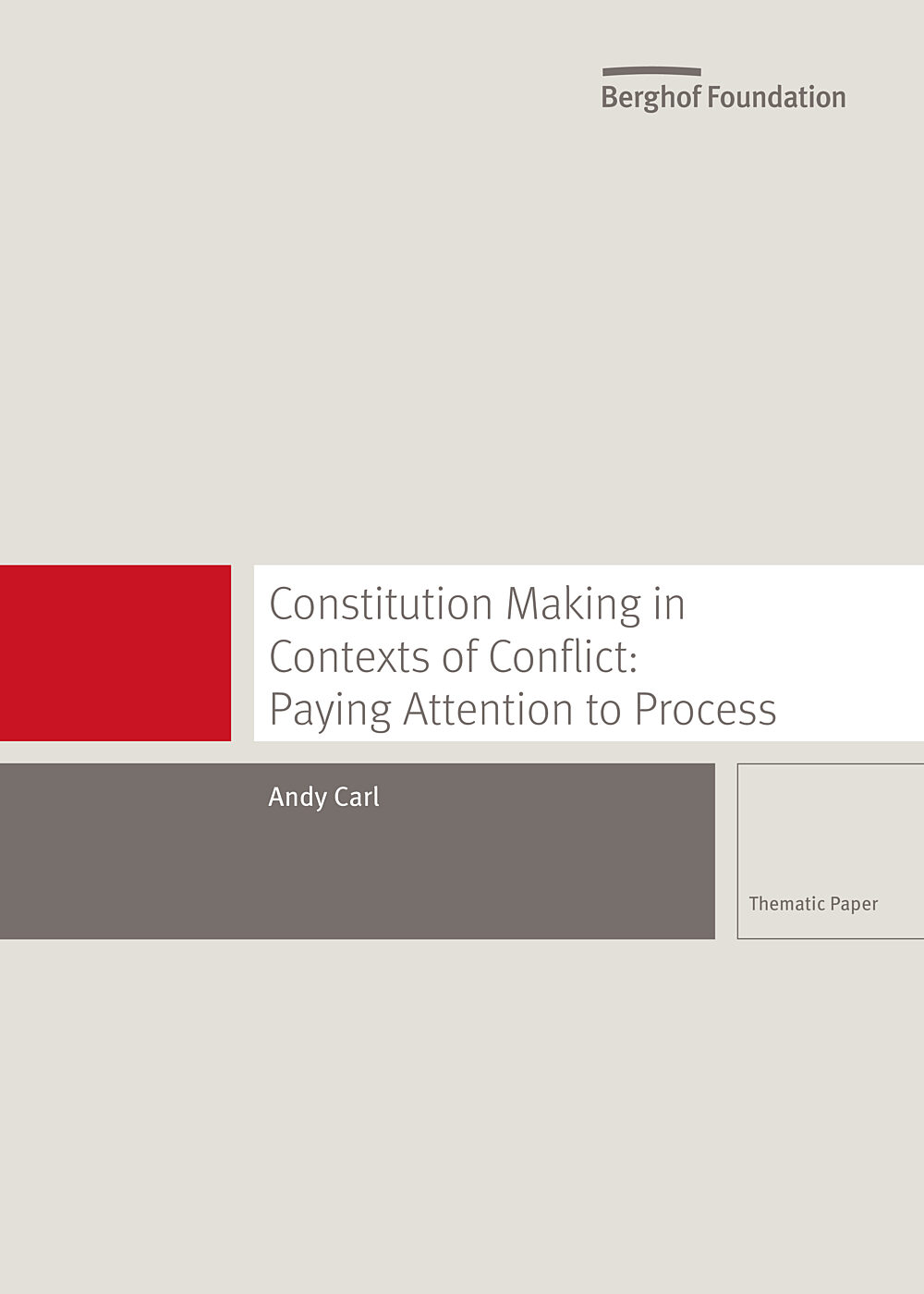
Constitution Making in Contexts of ConflictPaying Attention to Process
Carl sets the background of his study as such: Behind the headlines of reformed and new constitutions lie complex and dynamic processes with prominent and less prominent actors and initiatives, all taking place in same space and time as the ongoing crisis and conflicts. When successful, their actions add up to processes of constitution building that represent a new and purposeful dynamic of accommodation and assertion of a new law-based order. This transformative change emerges out of the counter-current of powerful and self-perpetuating economic, political and social systems of conflict. Within this background, Carl addresses questions like: what do we know about how such change processes happen, and what can we learn from those deliberate, planned and implemented projects, initiatives and interventions? He sets out a series of framing issues and concepts.
- Year2019
- Author(s)Andy Carl
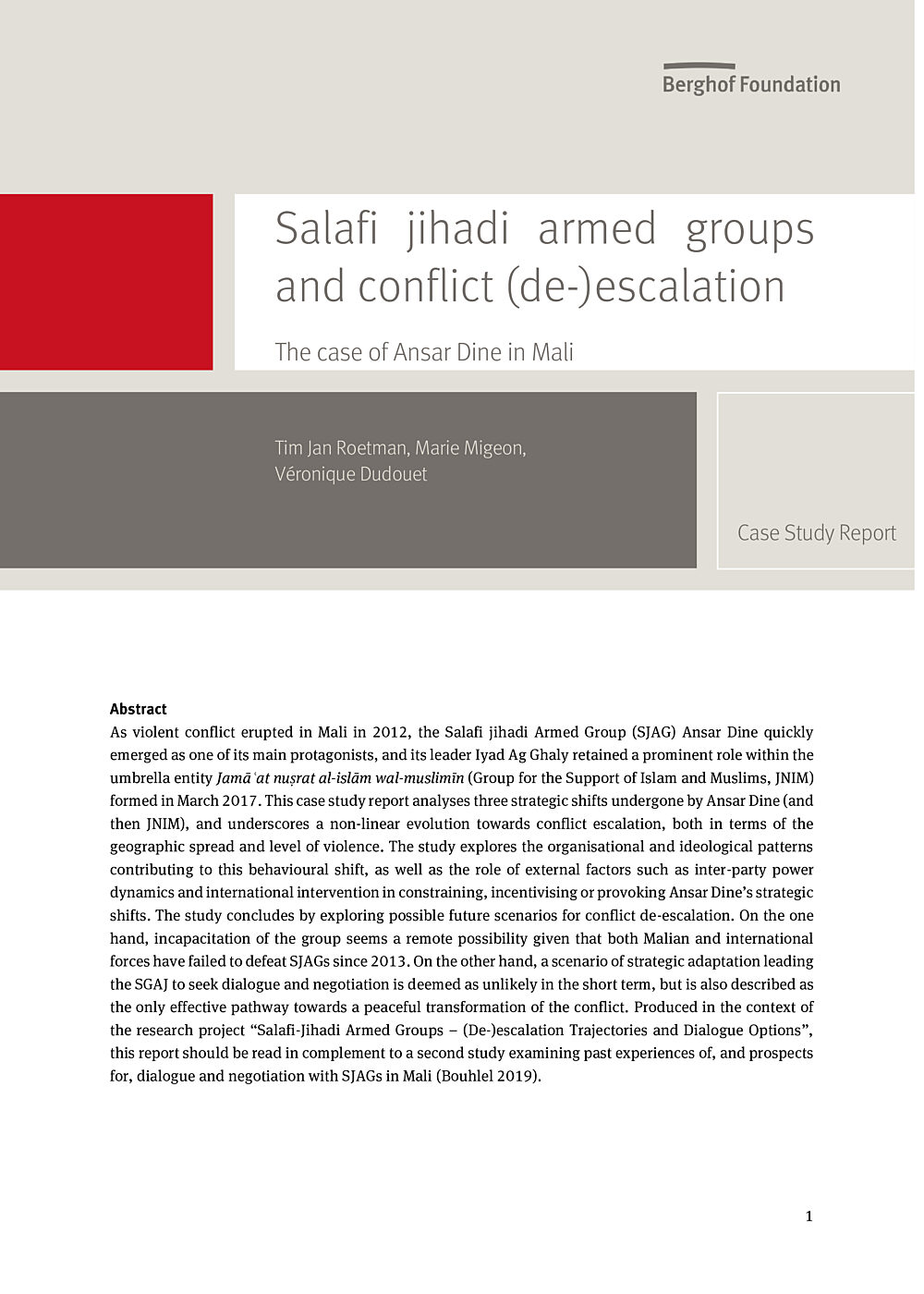
Salafi jihadi armed groups and conflict (de-)escalationThe case of Ansar Dine in Mali
As violent conflict erupted in Mali in 2012, the Salafi jihadi Armed Group (SJAG) Ansar Dine quickly emerged as one of its main protagonists, and its leader Iyad Ag Ghaly retained a prominent role within the umbrella entity Jamāʿat nuṣrat al-islām wal-muslimīn (Group for the Support of Islam and Muslims, JNIM) formed in March 2017.
- Year2019
- Author(s)Tim Jan Roetman, Marie Migeon, Véronique Dudouet
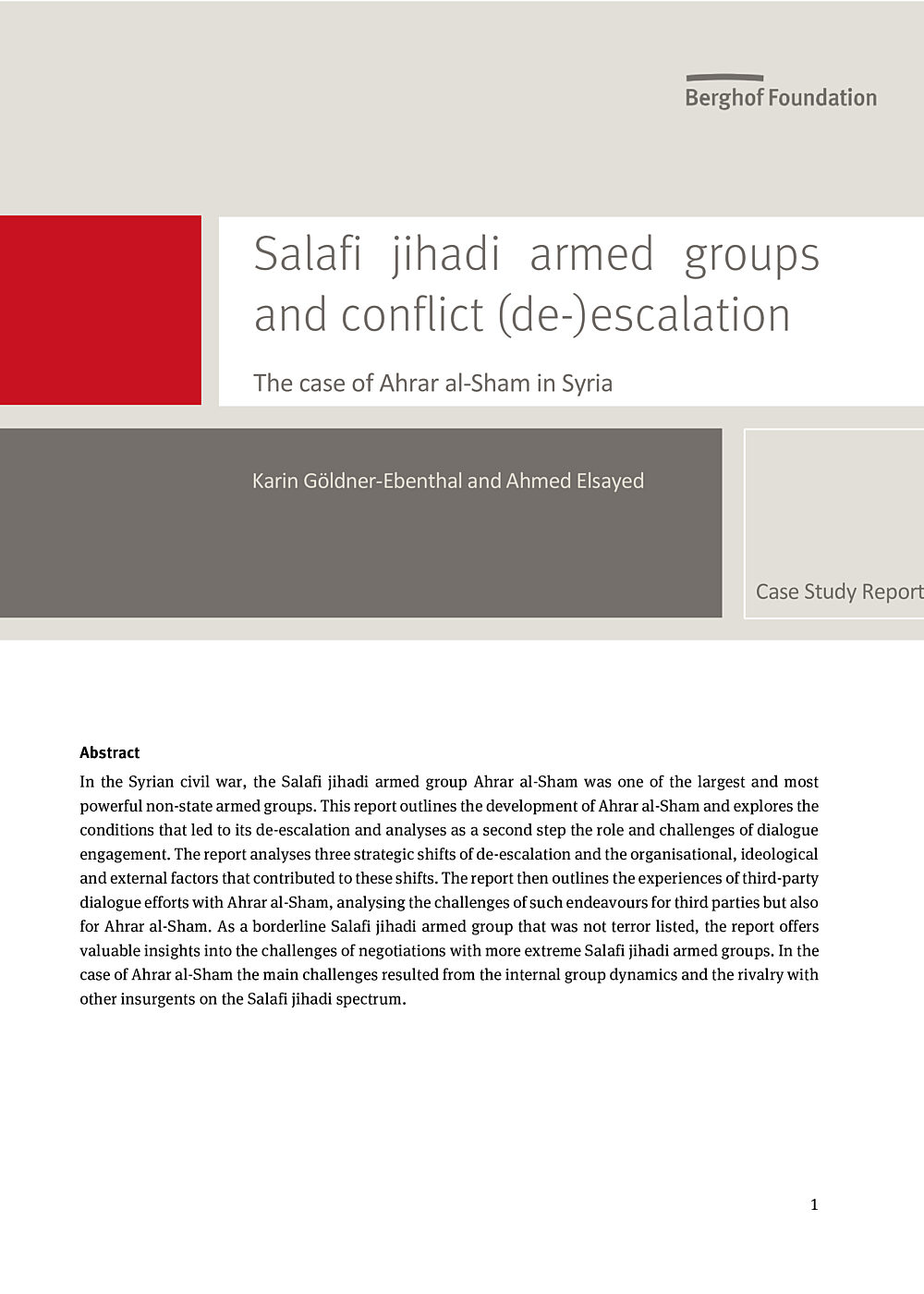
Salafi jihadi armed groups and conflict (de-)escalationThe case of Ahrar al-Sham in Syria
In the Syrian civil war, the Salafi jihadi armed group Ahrar al-Sham was one of the largest and most powerful non-state armed groups. This report outlines the development of Ahrar al-Sham and explores the conditions that led to its de-escalation and analyses as a second step the role and challenges of dialogue engagement.
- Year2019
- Author(s)Karin Göldner-Ebenthal, Ahmed Elsayed